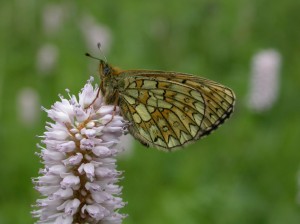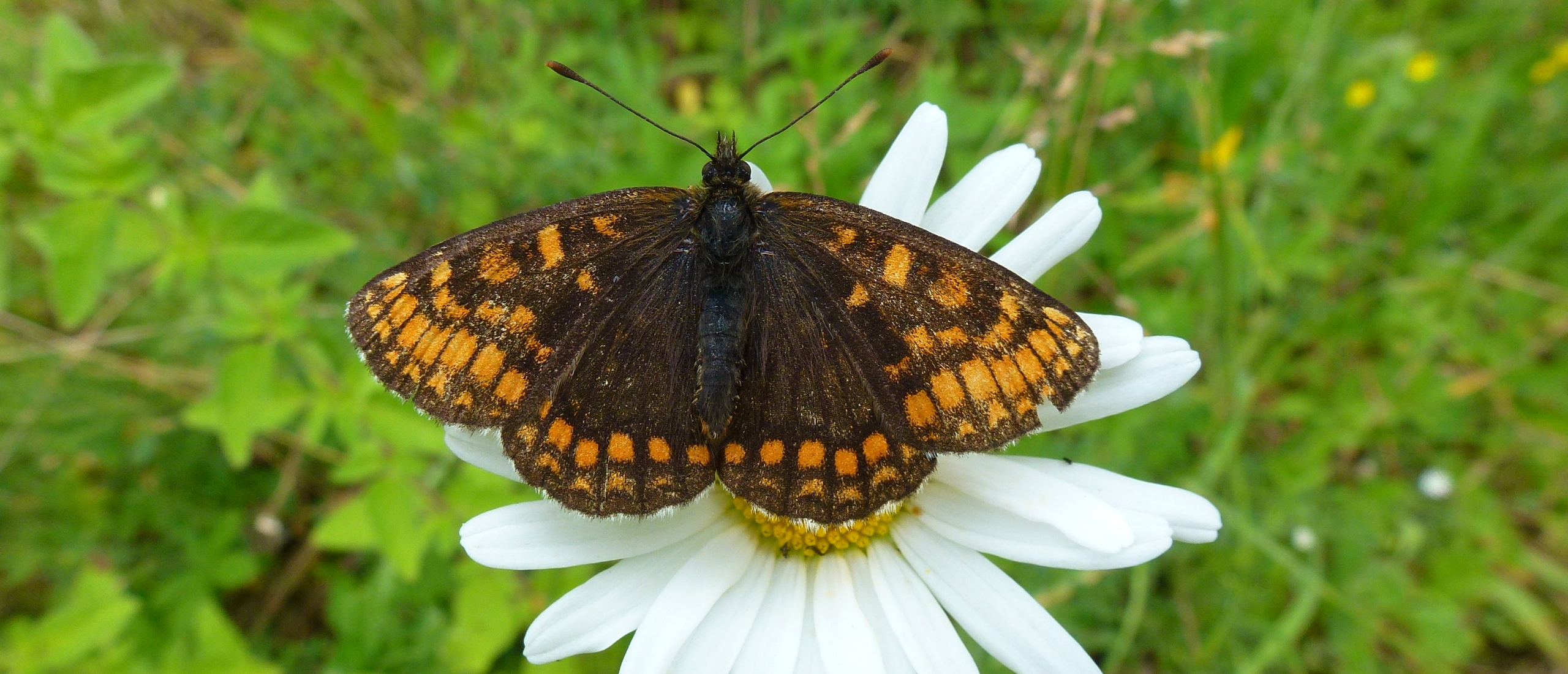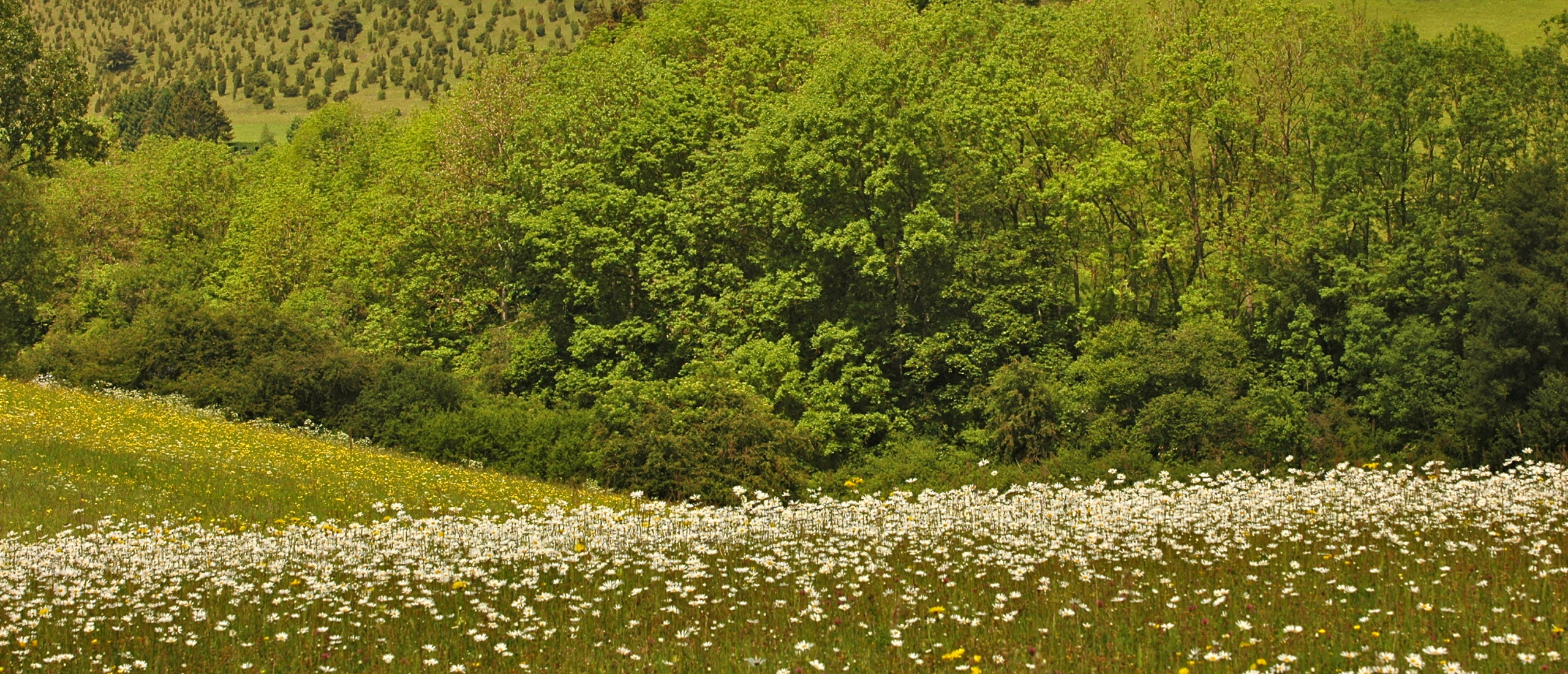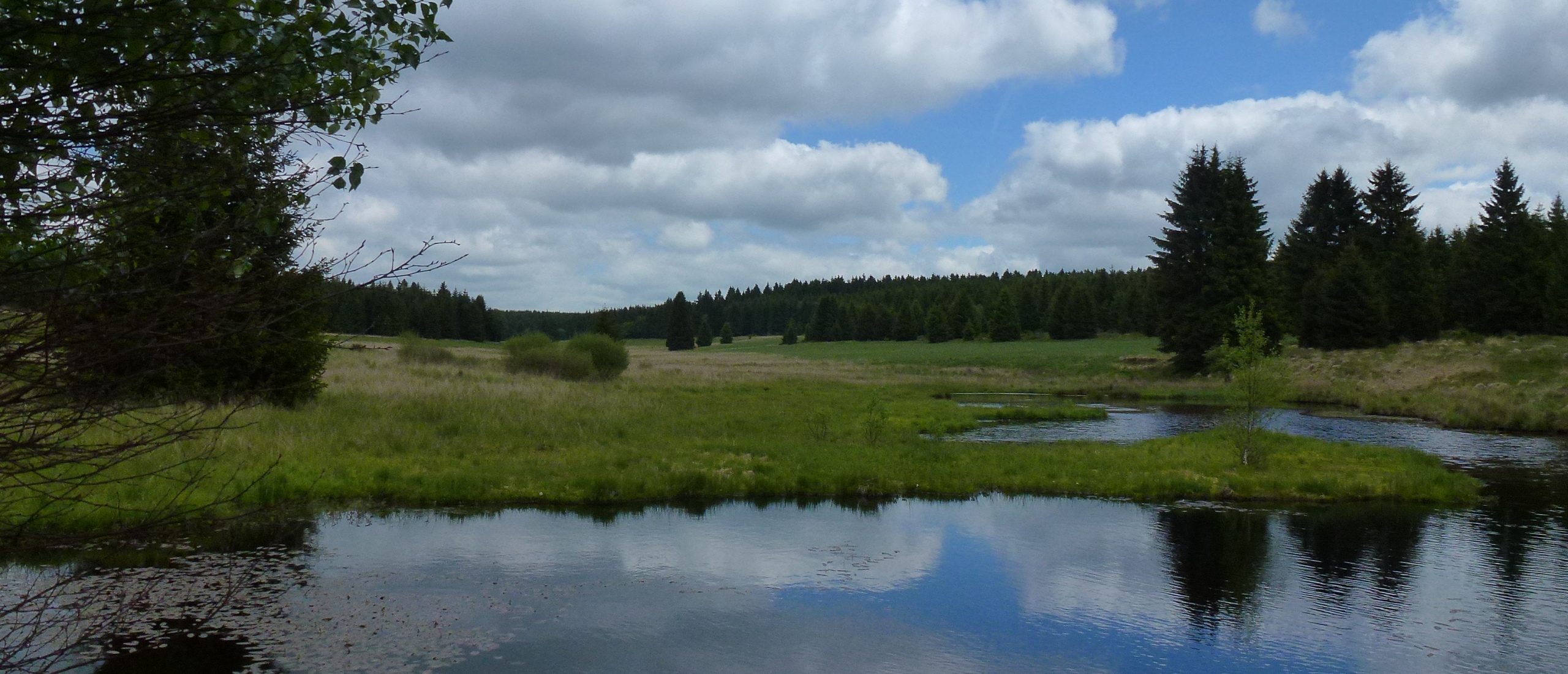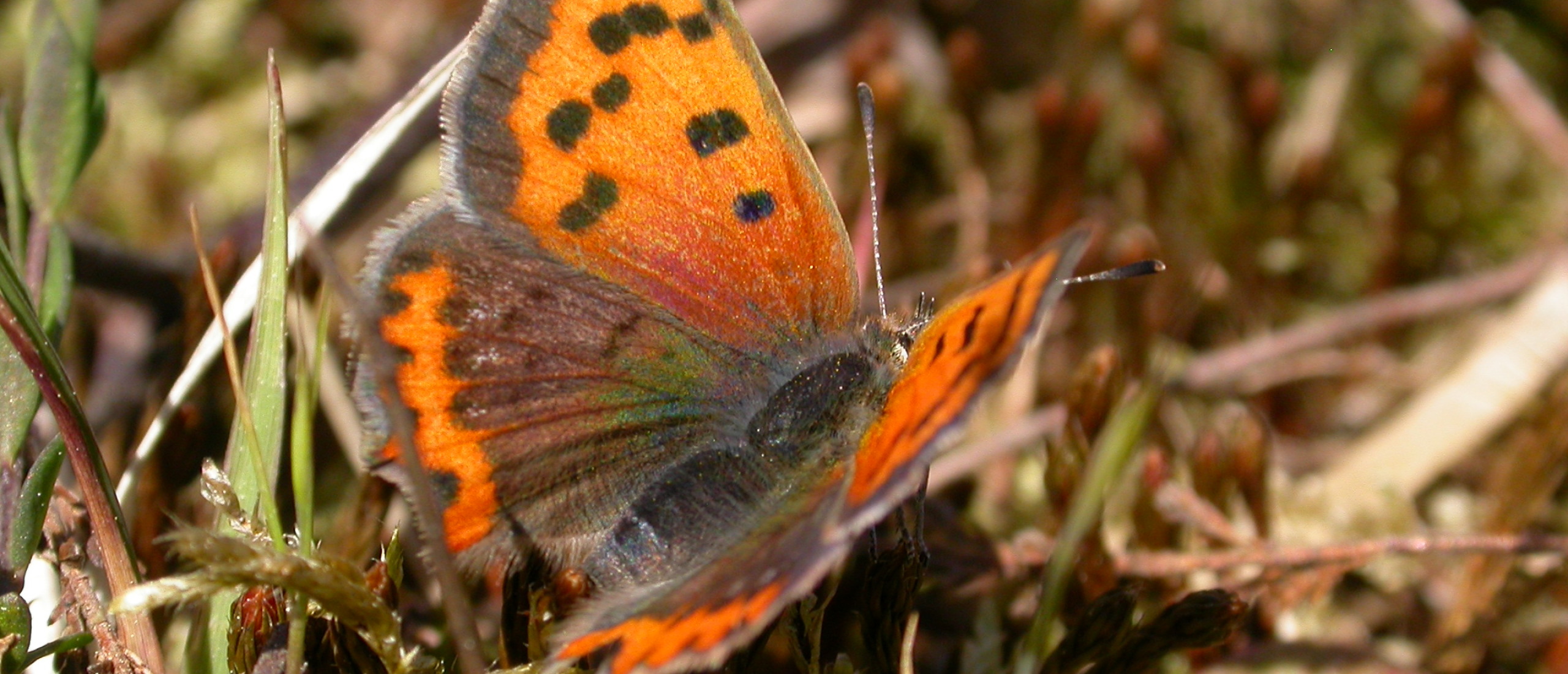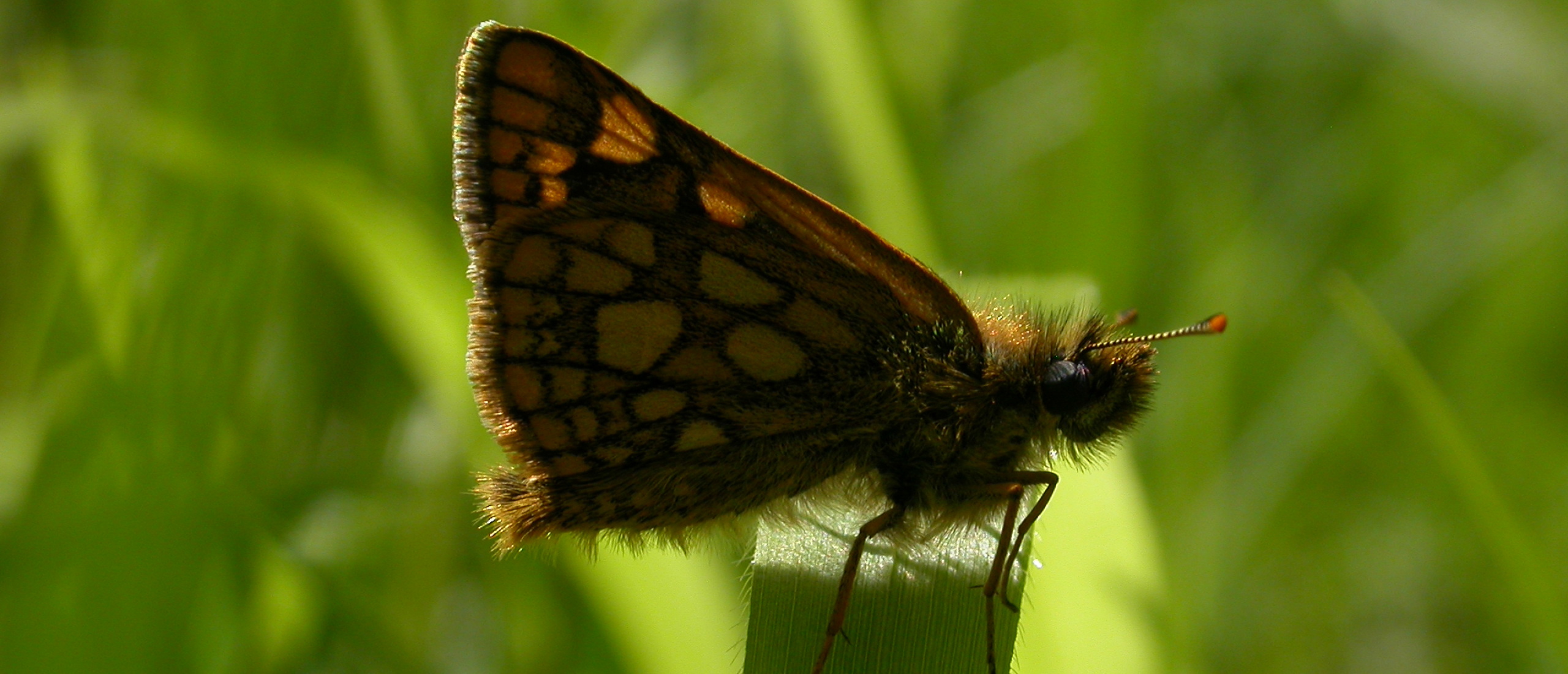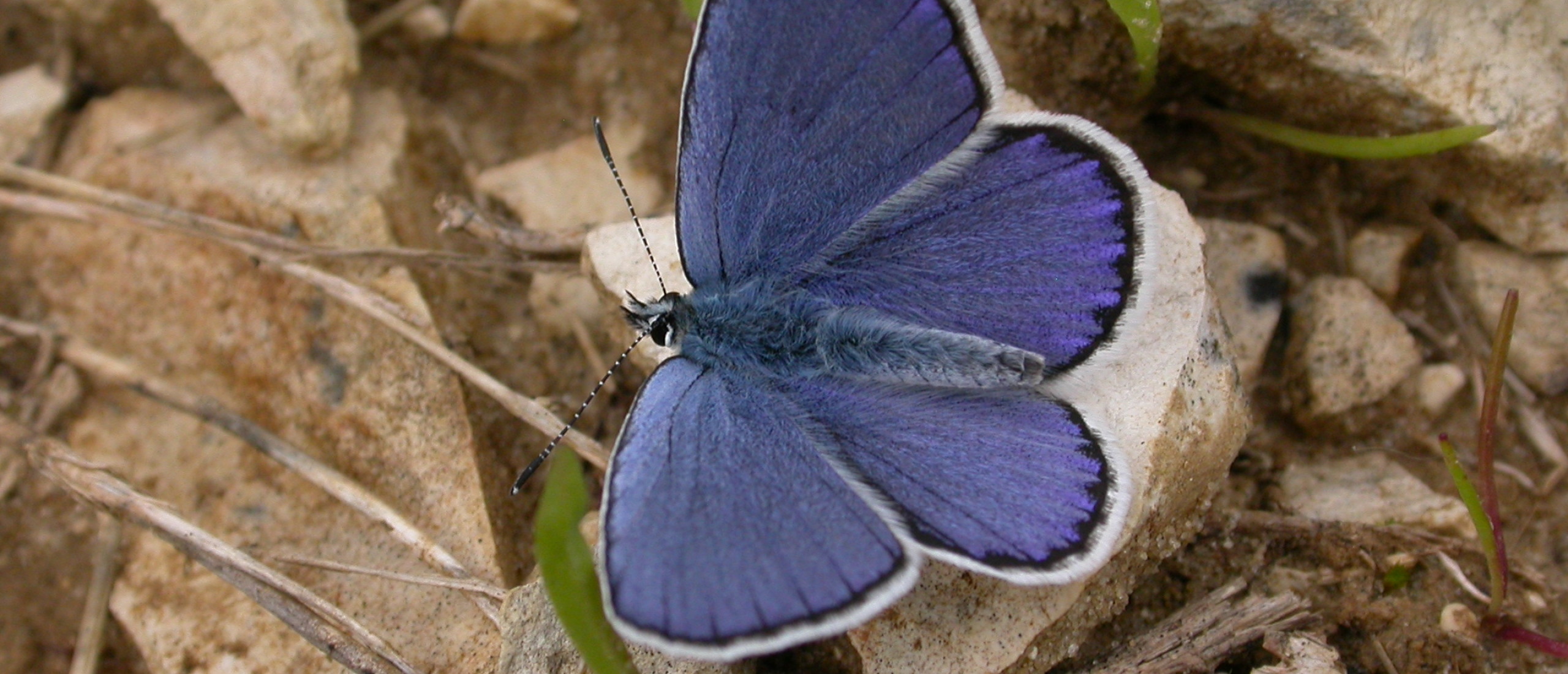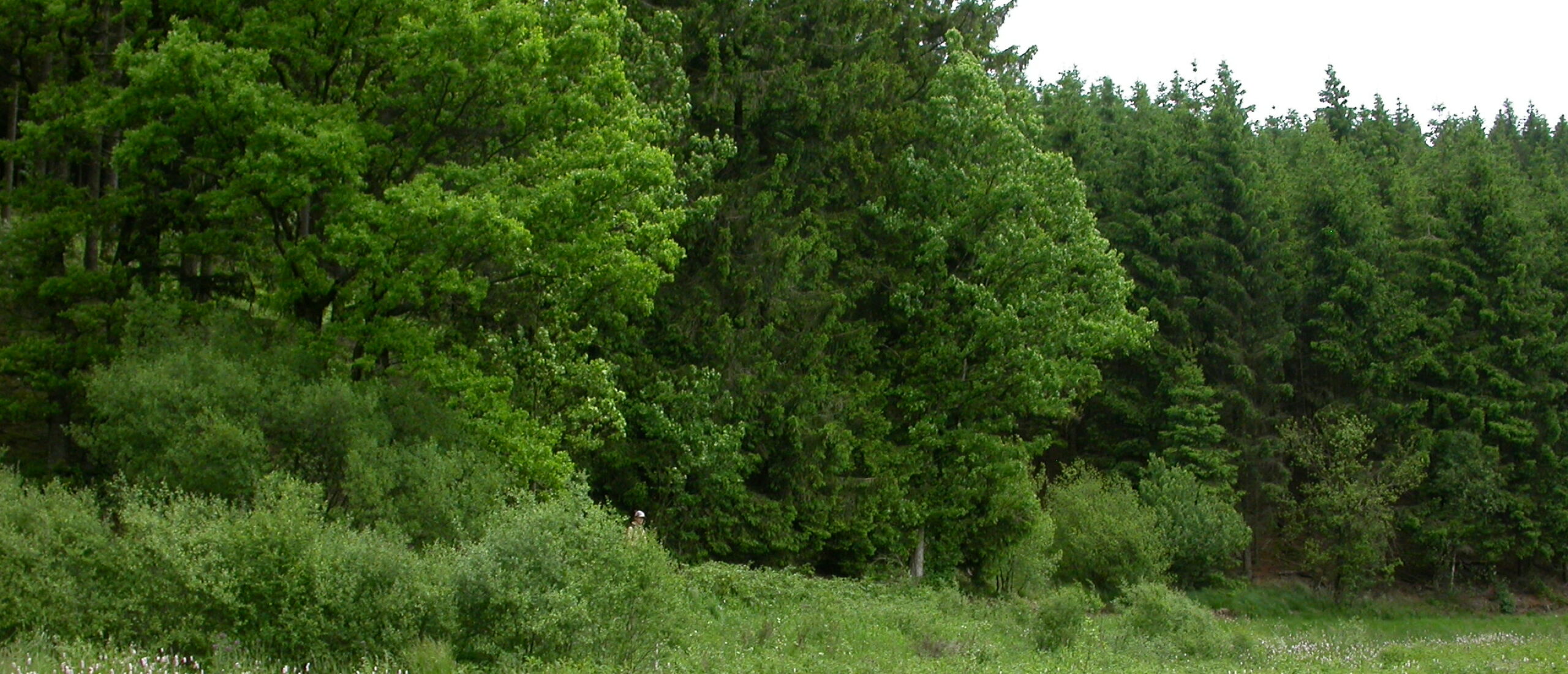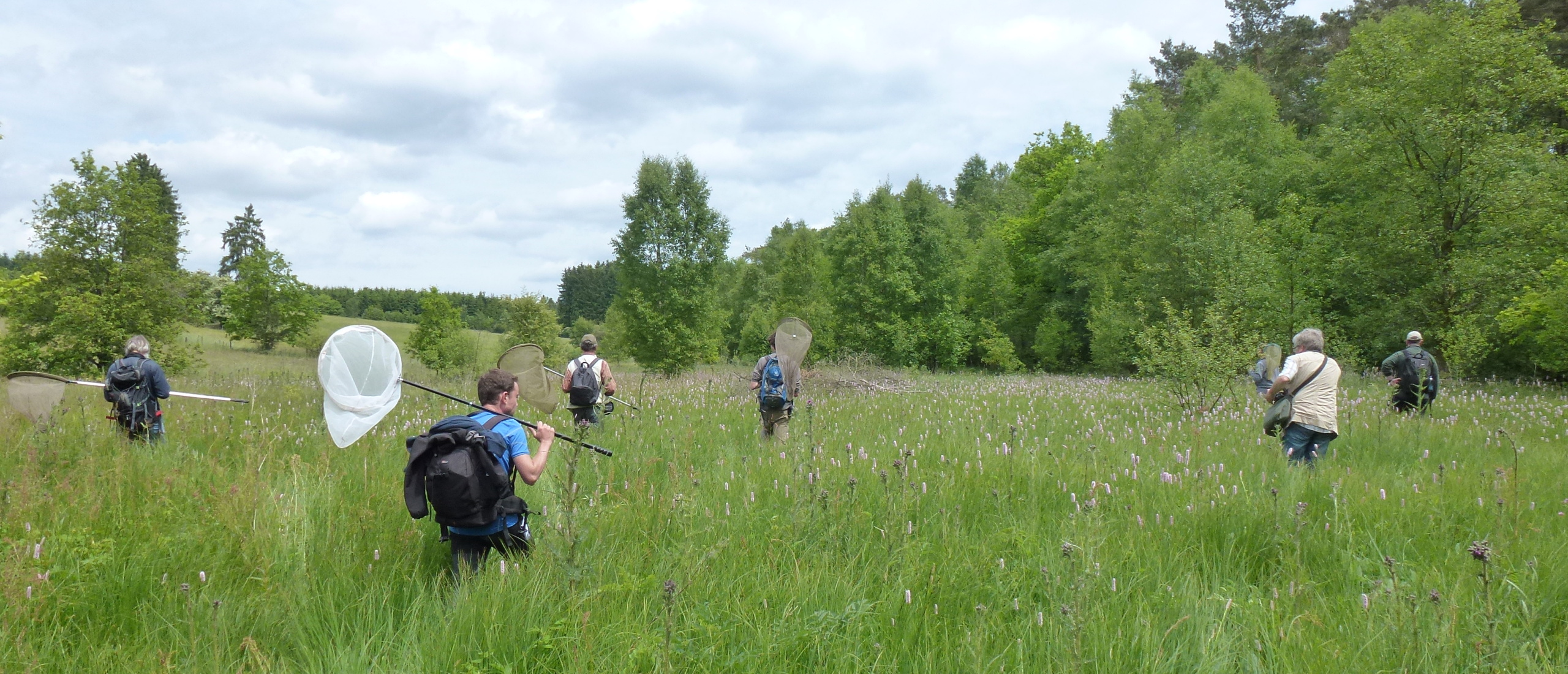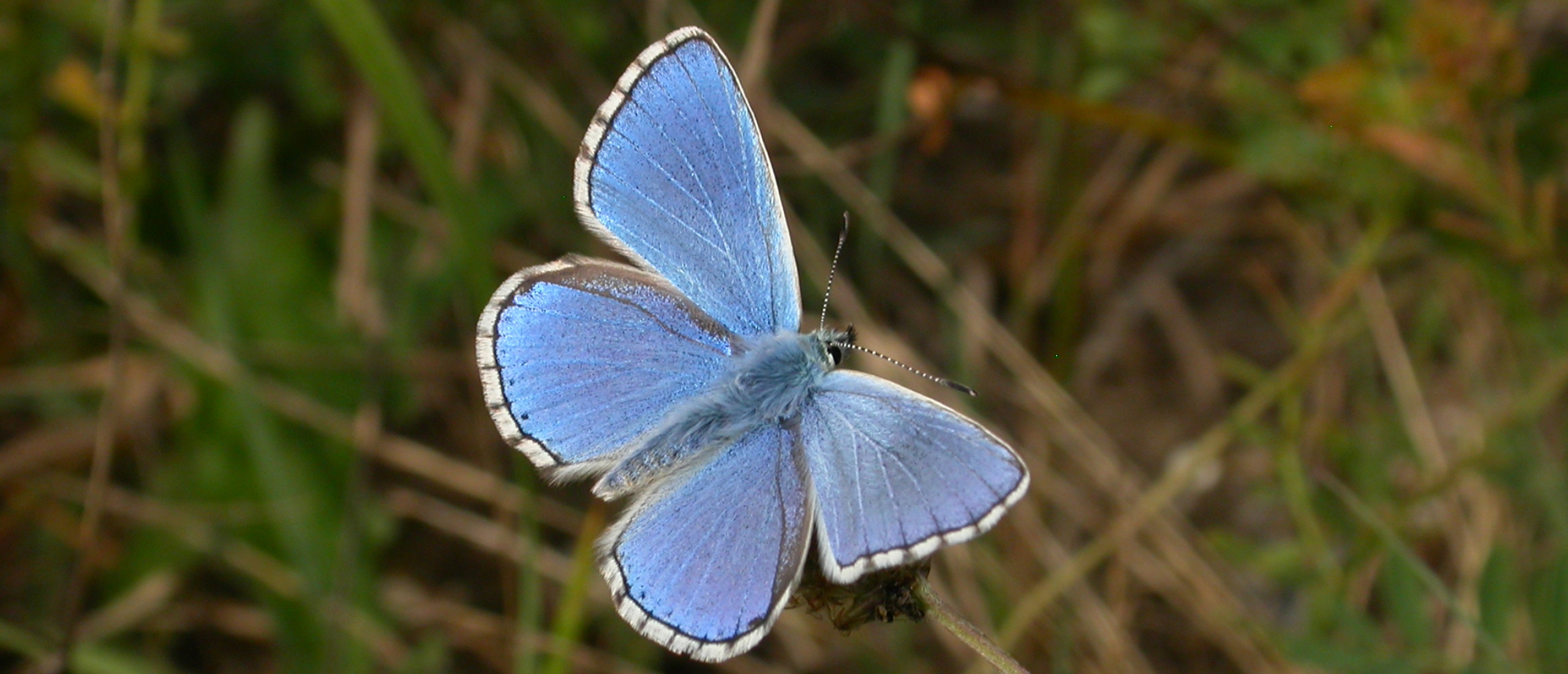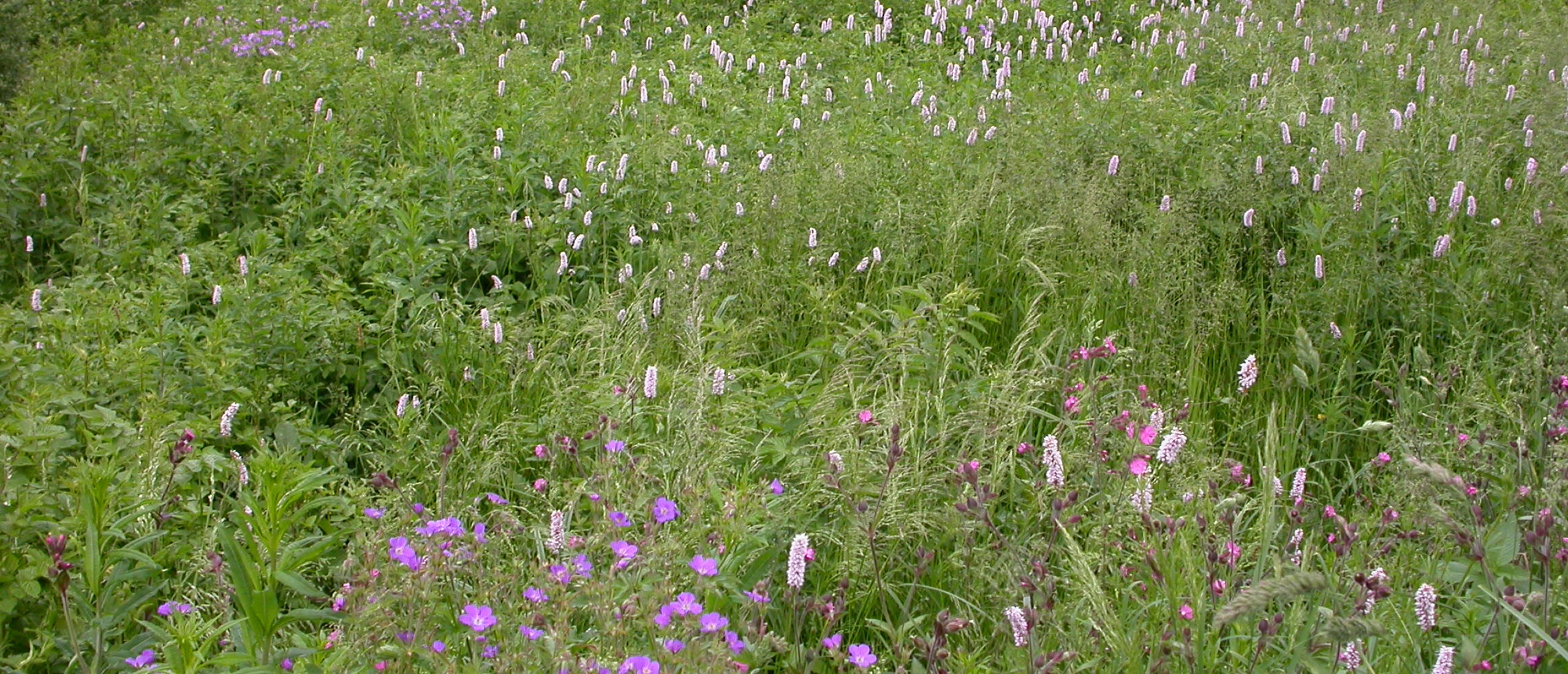
Butterflies of the Bistort Today's target species were two veritable specialists, the Violet Copper, Lycaena helle, and the Bog Fritillary, Proclossiana eunomia. The larvae of both species feed (at least in this area) exclusively on the leaves of Bistort, Polygonum bistorta, a plant that grows in profusion in damp meadows in the region where I am currently located, in the Hautes Fagnes/Hohes Venn (or High Fens), in north-eastern Belgium. This is a wild area of peat bogs, extensive forests and open tussocky grassland, peaking at the highest point in the Benelux countries, at 694 metres. Just to the south is an extensive network of small streams, and along their valleys is where the most extensive areas of the beautiful pale pinkish blooms of Bistort can be found, along with their attendant butterflies.
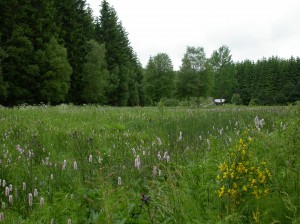 A valley filled with Bistort, larval foodplant of the Bog Fritillary and the Violet Copper
A valley filled with Bistort, larval foodplant of the Bog Fritillary and the Violet Copper
Despite far-from-ideal weather conditions, it was not long before I was able to locate a single Bog Fritillary, trying to warm itself in the weak sunshine. The Bog Fritillary is superficially similar to other small fritillaries, including the Small Pearl-bordered, of which I later saw a few as well, but the black markings on the upperside are narrower, and there is a very faint suffusion of black scales across the entire upper surface, giving it a slightly dusty appearance. In addition, this species is less hyper-active than other similar fritillaries, which tend to race about, settling only rarely, whereas this species is much less flighty, and therefore easier to approach.
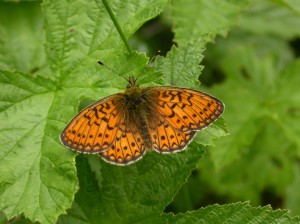 A male Bog Fritillary basking in the weak sunshine
A male Bog Fritillary basking in the weak sunshine
After the short sunny spell that allowed me to see the Bog Fritillary, dark clouds began to move across the sun, but I just had time to locate one example of the Bog Copper, Lycaena helle, hunkering down among the vegetation, out of the strong wind that was whistling along the valley floor, stirring up the Bistort plants and making photography a challenge, to say the least.
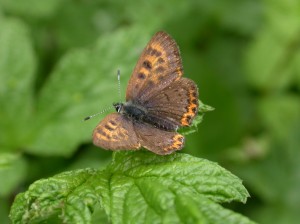 A rather tired-looking Violet Copper
A rather tired-looking Violet Copper
Unlike the Bog Fritillary, the Violet Copper emerges earlier in the year, and I was not sure that I would find one even disregarding the poor weather conditions, and I was pleased to do so, especially as the sun promptly disappeared and the rain began to fall, rendering butterfly observation out of the question, at least for a while. Luckily, however, the wind was sufficiently strong as to blow the storm quickly through, and from then on the day turned into one of "pepper and salt", with sunny spells interspersed with dark periods of drizzly rain, and always with that strong wind whisking across the valley floors. It was not long before the sun reappeared, and with it several more Bog Fritillaries. While the upperside may be hard to distinguish from other small fritillaries, if one gets the chance to examine the underside, any lingering doubts are soon dispelled; the pattern on the underside of the hindwing is totally distinctive, with no silver spots and a row of small rings parallel with the outer margins; the Dutch name of this species, Ringoogparelmoervlinder, means ring-eyed mother-of-pearl butterfly, a highly appropriate name, except that unlike most other fritillaries, this species does not have the amazing mother-of-pearl-like silver spots so characteristic of the group.
From here the trail passed through a stretch of thicker pinewoods, where butterflies were not to be found, but just beyond was a much more open area of Bistort, interspersed with thistles, and some flower-filled fields in which I had high hopes of finding my third target species, the almost unimaginably beautiful Purple-edged Copper, Lycaena hippothoe. The flowerheads and grass were waving about vigorously in the gusting wind, making the search for butterflies even more difficult, but it was not long before I spotted a purplish shape fluttering through the grass stalks, and it turned out to be a newly-emerged, jewel-like male Purple-edged Copper. Photography was far from easy, but I did manage to obtain one passable shot before the butterfly was swept away in the wind and I lost sight of it.
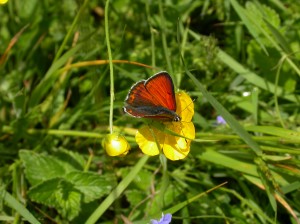 A glowing male Purple-edged Copper
A glowing male Purple-edged Copper
By now the weather was closing in again, and the return walk was marked only by around three handsome Large Skippers, Ochlodes venatus, darting along the verges of the trail through the pinewoods.
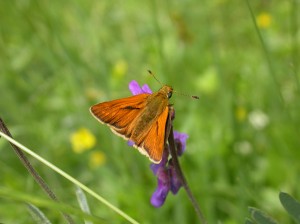 A bright, newly-emerged male Large Skipper
A bright, newly-emerged male Large Skipper
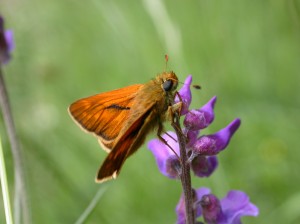 Skippers are known in Dutch as Dikkopjes, or fat-heads, due to their broad heads
Skippers are known in Dutch as Dikkopjes, or fat-heads, due to their broad heads
Shortly before I reached the car, the route took me past a more sheltered, Bistort-filled clearing, where several more Bog Fritillaries were to be found, followed by one very ancient-looking Violet Copper, missing a large section from one of its hindwings, and probably not destined to last many more days.
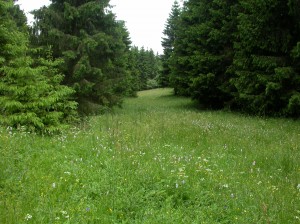 The sheltered, Bistort-filled clearing
The sheltered, Bistort-filled clearing
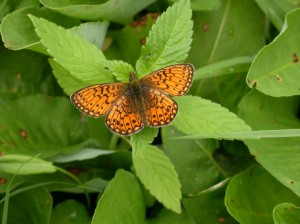 A Bog Fritillary, wings open to catch all the warmth it can obtain from the weak sunshine
A Bog Fritillary, wings open to catch all the warmth it can obtain from the weak sunshine
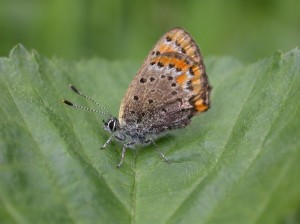 The tired-looking Violet Copper, part of its hindwing missing
The tired-looking Violet Copper, part of its hindwing missing
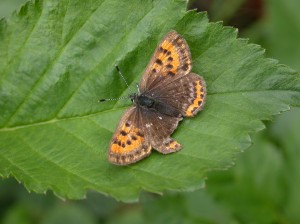 The Violet Copper, enjoying perhaps the last few days of its short spell as an adult butterfly
The Violet Copper, enjoying perhaps the last few days of its short spell as an adult butterfly
Many of the river valleys and Bistort areas here in eastern Belgium have been lost, partly due to agricultural "improvement", and partly converted into intensively farmed plantations of young spruce trees, mainly for the Christmas tree market. However, in this particular area, strenuous efforts have been made to not only preserve the remaining habitat, but also to extend it. Long may these wonderful areas of marshland, dotted with the pink spikes of the Bistort flowerheads, remain intact with their Fritillaries and Coppers fluttering above them.
 The butterfly habitat, resplendent with Bistort and Cranesbill
The butterfly habitat, resplendent with Bistort and Cranesbill
Butterfly list as of 22nd June: 43 species


